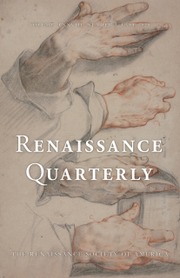The Art of Childbirth offers a glimpse into the world of early modern midwifery through the rare lens of a woman: Marie Gosse or Madame Baudoin, a seventeenth-century French midwife. This bilingual edition, carefully edited and translated by Cathy McClive, Associate Professor of History at Florida State University, brings to light a previously unpublished and likely unnoticed little treatise in letter form that Madame Baudoin sent to the powerful Parisian physician Dr. Noël Vallant in 1671. The manuscript, later discovered within Vallant’s extensive literary archives now housed at the Bibliothèque nationale de France, is a valuable document for the social and medical history of women. It provides insight not only into the technical aspect of childbirth but also into the gender dynamics of medical practice in early modern France.
Cathy McClive’s introduction to the treatise is exemplary for its rigor, accuracy, and sensitivity to the historical landscape. She situates Baudoin’s work within the broader context of seventeenth-century midwifery and medical practice in France, highlighting the scarcity of female-authored midwifery texts despite the significant role that midwives played in their communities. McClive explores the social and professional networks of a provincial midwife, including her interactions with male physicians and her involvement in religious and credit networks. This context is crucial for understanding Baudoin’s life and work and the multiple dimensions of early modern women’s lives.
Indeed, one of the most intriguing aspects of Madame Baudoin’s microhistory is her capability to live as an “independent woman in provincial France.” Despite the fragmented sources, Cathy McClive manages to reconstruct Baudoin’s fascinating biography. Born into the artisanal class, she trained in midwifery at the Hôtel-Dieu in Paris. She adhered to a controversial form of Catholicism known as Jansenism; she separated from her husband and spent most of her career serving as midwife then as governor of the Hôtel-Dieu. In this prestigious position involving significant administrative responsibilities, including managing hospital finances, Baudoin proved to have political, managerial, and economic skills. In doing so, she defied traditional gender roles and norms of early modern Europe.
McClive also delves into the journey and survival of Baudoin’s manuscript, raising questions about why the treatise was not published either by Marie or by Vallant. The text concludes by proposing that Vallant’s failure to publish Baudoin’s treatise might have been a deliberate choice rather than an accidental oversight or failure of patronage. Institutional and archival barriers often silence women’s voices in history. These obstacles can arise from the way records are structured, from intentional obfuscation by male scientists, or from women’s own choices to keep their contributions private due to personal or familial reasons. Finally, by questioning the reasons behind Vallant’s and Baudoin’s actions, the text opens up a broader conversation about the nature of historical records and the importance of critically examining them in order to recover and recognize the contributions of marginalized groups.
The epistolary treatise itself is a fascinating document. Baudoin talks about birthing techniques, complications, maneuvers, and remedies, while emphasizing the moral and ethical dimension of midwifery. She underscores the importance of compassion, discretion, and respect for the birthing woman’s experience. McClive’s translation captures Baudoin’s voice—by turns authoritative, compassionate, and candid—ensuring that the midwife’s personality and expertise shine through. In addition, McClive’s annotations and footnotes are invaluable, providing historical context and clarifying Baudoin’s references to contemporary medical practices and beliefs. These notes enhance the reader’s understanding of the text and underscore the interconnections between Baudoin’s practical advice and the broader medical knowledge of her time. McClive’s scholarly apparatus thus enriches the treatise, making it a more comprehensive resource for researchers.
In conclusion, The Art of Childbirth is an essential addition to the historiography of early modern medicine and midwifery. Marie Baudoin’s treatise, brought to life by Cathy McClive, provides a vital perspective on the practices and philosophies of a seventeenth-century midwife. It highlights the significant contributions of women to medical knowledge and practice.



